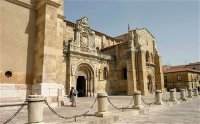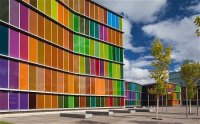leon Spain
 The pilgrims, scallop shells dangling from their backpacks, are up before the sun. In the cool of the dawn I watch from the balcony of my parador, itself a former pilgrims’ hostel, as these doughty hikers cross the old San Marcos Bridge and make their way out of León. This ancient seat of the Reconquista, eponymous capital of the kingdom which famously had 24 kings before its upstart neighbour Castile even had laws, has long been a major way-station on the holy Camino to Santiago de Compostela.
The pilgrims, scallop shells dangling from their backpacks, are up before the sun. In the cool of the dawn I watch from the balcony of my parador, itself a former pilgrims’ hostel, as these doughty hikers cross the old San Marcos Bridge and make their way out of León. This ancient seat of the Reconquista, eponymous capital of the kingdom which famously had 24 kings before its upstart neighbour Castile even had laws, has long been a major way-station on the holy Camino to Santiago de Compostela.
In recent times, however, León’s position in relation to the ferry ports at Santander and Bilbao has also commended it as a favoured stop-off for visitors heading south to Spain and Portugal. Whether they arrive on foot or in the family car, visitors delight in 13th-century artistic masterpieces, the charming back streets and the full-on foodie culture – think lengua curada (cured tongue) – of León’s casco antiguo (Old Town).
Whether they arrive on foot or in the family car, visitors delight in 13th-century artistic masterpieces, the charming back streets and the full-on foodie culture – think lengua curada (cured tongue) – of León’s casco antiguo (Old Town).
I begin my day by tracing the pilgrims’ footfalls in reverse. Beyond the brass statue of a cowled pilgrim resting his sore feet in Plaza de San Marcos – no wonder the city boasts so many orthopaedic clinics – I follow the brass scallops set in the pavement that mark the Camino’s route through León. They lead past the plazas and broad boulevards of the new town, past the medieval walls, to the old city’s cathedral. Beyond the ornate Gothic stonework of the doorways I gasp at the stained glass, the most exquisite in Spain. For a closer look at their fiery reds and intense blues, I join a tour to the platform being used during restoration high in the cathedral’s interior.
Source: www.telegraph.co.uk
Related posts:








